#bhuvaneshvari
Photo
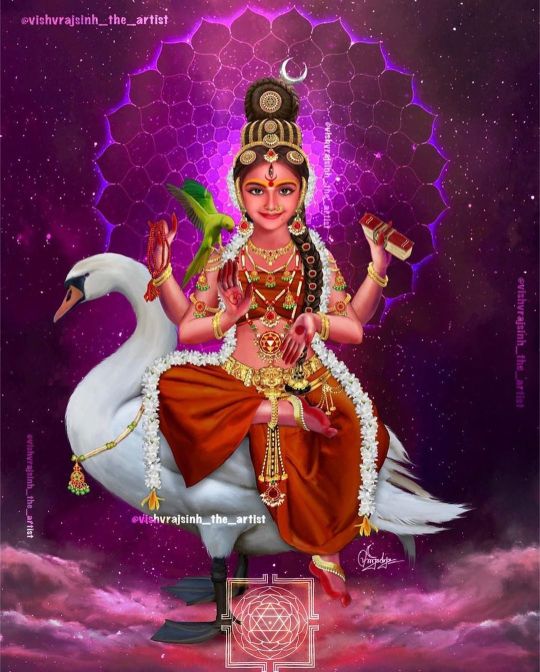
🟣🟣🌸🌸🟡🟡🌸🌸🟣🟣 AN AMAZING AUSPICIOUS BEAUTIFUL DEVIMAA 🌺🌺🌺from @vishvrajsinh_the_artist • . ༺।। श्रीविद्या ।।༻ ꧁𝐒𝐡𝐫𝐞𝐞 𝐁𝐚𝐥𝐚 𝐓𝐫𝐢𝐩𝐮𝐫𝐚𝐬𝐮𝐧𝐝𝐚𝐫𝐢꧂ Śrī Balā Tripurasundarī is a child form of the Devī.She is Non Different from Śrī Lalita Mahātripurasundarī herself. She is seen with four hands holding an akshamālā, pustaka, abhaya and varadam. Her Vāhana is a swan (Hamsa) and is the representation of complete knowledge and wisdom.She is Gurumaṇḍaḷa rūpiṇī. Bala = Guru"....... Context? She is the one who resides in the Guru sthana in one's body. She is the intuitive power behind every Siddha. It is because of her that the line of siddhas starting from Shree Agastya himself had direct connections with the divine. But in today's world, she is underestimated. People yearn to go to the next stage without properly propitiating her. Shree Dakshinaamoorti's gurumaataa was Shree Bala Tripurasundari who later gave herself to Shree Dakshinaamoorti, in the form of Shree Tripurabhairavi, as his consort after eons of worshipping her. Hence she is the very embodiment of Guru Tattva. She is gurumandala all in all. Let us remember her through a verse : हे देवी गुरुरूपिणी शुभकरी कन्यास्वरूपे परे हे बाले ललिते बदरीशवन्दितपदे हे भैरवी मोक्षदे । हे सौम्ये वरदाभये शिवनुते रक्ताम्बरालंकृते श्रीविद्ये करपुस्तके सुखकरी माम् पातु पूर्णे सदा || Verses written by @kayceevee_19 #srividya #devi #ammavaru #manidweepam #shaktism #parabramha #shakta #srikulim #srimata #shodashi #mataji #sripuram #art #balatripurasundari #bala #bhuvaneshwari #srichakra #artistoninstagram #bahucharaji #bhuvaneshvari #lalita #kanchipuram #balambika #instaart #shreevidya #srividyaseries #vishvrajsinhtheartist #digitalart #indianculture #shreevidyaseries https://www.instagram.com/p/CpCHTpBuHxx/?igshid=NGJjMDIxMWI=
#srividya#devi#ammavaru#manidweepam#shaktism#parabramha#shakta#srikulim#srimata#shodashi#mataji#sripuram#art#balatripurasundari#bala#bhuvaneshwari#srichakra#artistoninstagram#bahucharaji#bhuvaneshvari#lalita#kanchipuram#balambika#instaart#shreevidya#srividyaseries#vishvrajsinhtheartist#digitalart#indianculture#shreevidyaseries
20 notes
·
View notes
Photo

Bhuvaneshvari
111 notes
·
View notes
Photo

#angadhgaam #chhinmasta #hathiyakhadag #jaymatajinamohnarayan #jaymahakalimaa #chhinnamasta #mahakali_official__ #matangi #bhuvaneshvari #dashamahavidya #bagalamukhi #shodashi #jaymomaimaa #kamla #jaydashamaa #bhuvneshwari #makarpura #chinnamasta #jayambemaa #bagala #parashakti #manjalpur #mahavidya #mahakalianthhiaarambhha #tara #bhairavi #shakta #bhuvaneshwari #kamala #dusmahavidya (at India) https://www.instagram.com/p/Cehx0lXvT8J/?igshid=NGJjMDIxMWI=
#angadhgaam#chhinmasta#hathiyakhadag#jaymatajinamohnarayan#jaymahakalimaa#chhinnamasta#mahakali_official__#matangi#bhuvaneshvari#dashamahavidya#bagalamukhi#shodashi#jaymomaimaa#kamla#jaydashamaa#bhuvneshwari#makarpura#chinnamasta#jayambemaa#bagala#parashakti#manjalpur#mahavidya#mahakalianthhiaarambhha#tara#bhairavi#shakta#bhuvaneshwari#kamala#dusmahavidya
0 notes
Text
भुवनेश्वरी साधना महाविद्या साधना रहस्य (Bhuvaneshvari Mahavidya MANTRA TANTRA SADHBNA) भुवनेश्वरी साधना महाविद्या मंत्र तंत्र साधना रहस्य
भुवनेश्वरी साधना महाविद्या मंत्र तंत्र साधना रहस्य
(Bhuvaneshvari Mahavidya MANTRA TANTRA
SADHNA)
आज हम भुवनेश्वरी साधनामहाविद्या के संबंधित Bhuvaneshvari Mahavidya MANTRA TANTRA SADHBNA) चर्चा करेंगे ��ए यह साधना दस कि अंतर्गत आने वाली साधना है यह साधना साधक हर कार्य मे विजय प्राप्त अर्थात सफलता दिलाती है ! “ह्रीं” इस शब्द या परम बीजाक्षर की महत्ता लिखनेमें…
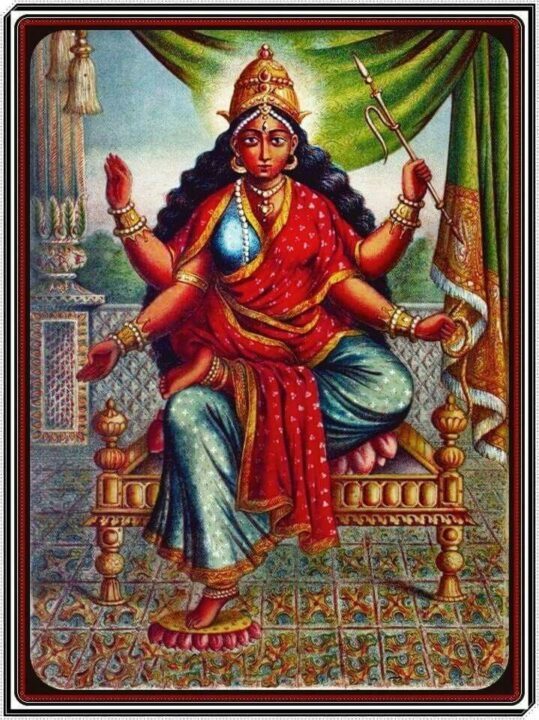
View On WordPress
1 note
·
View note
Text
the femininity of shani (what we can learn from pushya) 🌷

🌷 monica bellucci: pushya chandra
🌫️ The mystical tundra of Shani is often overlooked by its restricting feminine complexity and misconstrued for the nature of Buddha (the tantalizing serpent of Ashlesha). While their indirect submissive natures are similar in comparison, it is often natives of Mercury who use this explicit behavioral pattern for more materialistic, perhaps conniving, matters at hand. In this exploration of Shani’s ancient connection to divine femininity, I want to purposefully disclose that their submissive, seemingly “neutral” expressions are not the same. Buddha is the snake of binding to the collective for the intent of freedom and entangling or ensnaring their victim for the purpose of disempowering. Shani is the snake of binding to the contemporary nature of society for the intent of cooling the darkness of ego and empowering the higher collective. Buddha bestows the intelligence of the material aspects of the subversion into the intellect of worldly matters. However, Shani is the intelligence of the occult undertones which control the very essence of the material plane and the union of what is to come after we conquer the very shadows of the tenth house (the rashi of capricorn who will be the awakening of the realm, once we are released from Kali Yuga) to the hidden truths of the eleventh house, the supposed house of personal ties and fulfillment.

🌷 jessica lange: pushya lagna
☔️ There is a specific air of mystery around Shani and the graha’s corresponding nakshatras, bhavas and rashis. Much of the information provided is rather repetitively regurgitated from varying sources and of surface nature. My goal with this exploration is not to specifically delve in the expressional aspects of Shani, but to focus on the graha’s distinct involvement in the path of divine femininity. My hope is this exploration will awaken the serpent of knowledge within you, to explore the more niche archetypes within the vata umbrella that is Saturn.

🌷 miranda kerr: pushya lagna
⛩️ Vata dosha is most synonymous with cold, bereaved individuals who search this earthly plane longing for sustenance. It is the cold hands that seek to grasp the tangibility of spiritual words, it is the homeless widow who was once filled with wanderlust now bereaved, it is the drowsy feeling that surmounts when you look upon the rain beating down on your window pane. It is the dosha characteristic of the feelings we most disdain and wish to shy away from and simultaneously the realm of Shani, Chandra, and Rahu. We have heard the tales of the greedy, insatiable spirit of Rahu; the forgetful, lusting of Chandra; and the forever dried and cold spirit of Shani. Having repeatedly heard the rhetoric of these respective deities, a certain air of weariness has surrounded them respectfully. But you must continue to remind yourself of the necessity of attaining equilibrium and leaning into each graha’s meanings, teachings, and significances. If you are dominant in either of these vata grahas, know that you are more than the sterile or greedy archetype that has been placed upon you, as Kali (Shani) was equally as ferocious as she was creationist, Chhinnamasta (Rahu) was equally as violent as she was self-sacrificing, and Bhuvaneshvari (Chandra) is equally as intimidating as she is the supreme being of the earth, atmosphere, and heavens.

🌷 paris hilton: pushya chandra
🩸 In a similar fashion, the ethereal air of vata is equally as destructive as it is light, cool and dry. It governs all movement and processes in your mind and body (such as blood flow, breathing, and the coagulation of thoughts in your mind). This rulership of movement is why Shani is so astute and articulate within the realm of femininity. Shani is able to manipulate the vata element to attract and constrict around those we long to unite with. These elements of constriction are often associated with Ashlesha/Buddha, but significantly vary from each other.

🌷 gisele bundchen: pushya surya
🐍 Think of the Pushya nakshatra, the “Kula” star, resembling the flower of the snake gourd. Similar to Ashlesha, Pushya is also associated with serpentine movement. It is the maternal snake before it enters the stage of selfishness. It is focused on laying its cosmological eggs, whereas Ashlesha is the mother after this stage that abandons the cosmic eggs of Brihaspati (carefully crafted in Punarvasu) to never return or protect her young again. Ashlesha is leering into the gandanta knot spirituality of disempowering the collective, coiling up to rest in preparation for the spiritual shedding that awaits in Magha. Pushya is leering into the birthing of the collective itself. With the knowledge of vata dosha, Pushya is able to tap into previous experiences of destruction and coldness to relate to others. Using those previous experiences to further divulge into the mystified unknown that often longs to be hidden.

🌷 kate moss: pushya lagna
💒 This is why the cancer rashi is essential for developing cosmic energy and harnessing/wielding it. The cancer rashi is ruled by Chandra, of which is correlated to the Kamala Mahavidya (the vata being whose symbolism is comparable to that of Aphrodite or the Christian Mary). The primary “devastating” nature of vata is what sprouts fertility and purity, as the dirtiest mud will produce the freshest lotus. It is recommended in order to celebrate her, devotees engage in eating spicy, hot foods, as they ignite passion. These spices may include cinnamon, garlic, saffron, or chili peppers due to heavily spiced foods having the ability to bear this Mahavidya’s luscious energy. These same foods are associated with the vata Shani, in a similar fashion, Shani and Chandra are considered enemies but respectfully hold the cosmic keys to one another through the likes of Pushya and Shravana. The metaphor for the consumption of extreme vata spices that one earns the ability to celebrate and veneer the Mahavidya in her idealistic form is comparable to the narrative of sacrifice one must engage in to witness beauty (spiritually and physically). Aphrodite was offered sacrificial doves (bird’s being Shani’s primary vahana: vehicle) and smoky incense (smoke being ether in nature which is of vata dosha) in an attempt to receive love, fertility, and union. Whereas, the Virgin Mary was deemed pure due to her great sacrifice when she offered up the life of her Divine Son Jesus using her “Immaculate Heart” (similar to Kamala’s abundance in the anahata/heart chakra). In “A Prayer of Praise to the Blessed Virgin Mary” by St. Ephrem, he sang: “….Thou indeed art our only hope, most sure and sacred in God's sight, to whom be honor and glory, majesty and dominion, for ever and ever, world without end. Amen.”. Similar to Kamala, Aphrodite, and the Virgin Mary, so too must the masses work to earn the right to witness Shani’s femininity due to its premiere selectivity. This is why Pushya births the highest grossing models and revolutionary actresses in history [e.g. Halle Berry, Twiggy, Marlene Dietrich, Selena Gomez (who is now the most followed woman on Instagram) etc.], as the masses find pleasure in working to witness the mysticism vata bestows.

🌷 selena gomez: pushya surya and lagna
🍷 This mysticism is often deemed “odd”, “exotic” or “unique” and this is exactly where we can learn from the Mahavidya Kali. The darkened Mahavidya Kali breaks conventional stereotypes of feminine beauty and sexuality in Hindu goddess mythology. She serves as the dominant sexual partner straddling the prone Shiva (the master of poison and medicine, the great yogi, overlord of time, the cosmic dancer) and the wild warrior goddess drinking demon blood. She is originally depicted as a symbol of uncontrolled fury emerging from the fair, beautiful goddess Ambika (goddess of supreme power, energy and invincibility), in the battle with the demons in older Vedic texts. Thereafter, she gains independent existence both as the dark, mysterious and sexually demanding version of the more benign and auspicious Parvati and the primordial goddess power pre-dating the Hindu trinity of male gods, the Universal Mother Force which embraces both good and evil, gods and demons in the Kalika Purana. Unlike other texts which emphasize Kali's role in the battle against the demons, the Kalika Purana's focus is on her sexuality and her darkly sensual beauty. Equally it is on the heterodoxical rituals associated with her worship involving blood and flesh offerings, wine and the use of sexual intercourse as opposed to Vedic rituals.

🌷 dakota fanning: pushya chandra
❤️🔥 In Kalika Purana, Daksha’s daughter Sati, born fair, assumes the fearful visage of Kali and the other Mahavidyas to terrify Shiva into submission. At Daksha’s yagna, her father attributes her dark color to constant proximity to the wild-mendicant Shiva, causing her to give up her life in sorrow and humiliation. In the second portion of the Purana, she takes the dark and beautiful form of Parvati, similar to the appearance of a blue lotus. She was born to serve the gods’ purpose of luring into domesticity the stern, austere hermit-like Shiva to preserve the cosmic cycles of creation, preservation and destruction. It is only later, piqued and jealous of Shiva’s propensity towards fair-skinned goddesses that she emerges from her kosa (sheath) of darkness to become the golden-hued Gauri. Yet her darkly alluring and compelling sexuality is highlighted in the text as opposed to the prototype of a domesticated wife and mother like Candi in the Candi Mangal Kavya. John Stratton Hawley in his Prologue to “Devi: Goddesses of India”, noted that Kali in a strange way mediates between the transcendent goddess, the generic Devi who has supremacy over all forms of life and the consort goddesses like Lakshmi and Radha. Hawley wrote: “On the one hand, Kali unquestionably manifests herself as supreme—whether as a mother demanding submission or as an uncanny, uncontrollable force—but on the other hand, her supremacy is paradigmatically measured by the power she exerts over her consort the great god Shiva”. He detailed an example of her sexual dominance, the iconic representation of Kali dancing wildly on the prone, ithyphallic corpse of her husband Shiva. The Kalika Purana initially projects her as the manifestation of the universality of divine femininity, Mahamaya, who is Visnumaya and Rudrani consort of both Visnu and Rudra (Shiva). She is Savitri, Saraswati, through the power of her maya (illusion), incomprehensible to all who are ensnared in her power of illusion. She is Visnu’s Yoganidra, his state of cosmic sleep or stasis. She is Yogamaya/Mahamaya, who ensnares the cosmos in her web of illusion, she is Mahamoha, the fatal enchantress and the Supreme Trinity itself is not immune to her mysterious lure. Another goddess text, the Sri Lalita Sahasranama calls her Mahabhoga and Bhogini implying her rajasik-rupa (dynamism, also material grandeur) of being steeped in worldly luxuries. Yet she is the path to mukti (salvation) for beings trapped in the worldly and materialistic which is all part of her cosmic illusion. The Sri Lalita Sahasranama also states that she is Mohanasini, destroying the moha (bondage) of her devotees and Pasu-pasa-vimocini, releasing them from the inferior, coarser earthly bonds. She is Vidya (knowledge) for the householder who desires mukti (salvation), and Avidya (ignorance) who binds the universe in bonds of material desire. She is the primeval Demi-Urge, the Adyasakti that activates the inert maleness of Shiva into the dynamism of the Shiva-Sakti or Purusa-Prakrti union for without Sakti, Shiva is but a sava (corpse). Among the Sakta devotees it is Kali amongst the many manifestations of the divine feminine who is recognized as the Adya-murti, the original goddess manifestation. In the text, Kali alone can awaken the virility within Shiva, for on the one hand, she is a yogin to participate in his yoga and on the other, it is her eroticism, wild and uncontrolled, which is the perfect counterpart to his dominant sexual urges.

🌷 marlene dietrich: pushya chandra
🦶 Kali is feared in Hindu mythology as the negative stereotype in goddess cults and paradoxically revered as the Universal Mother. In a similar fashion, Pushya natives serve as the nourishing udder they are symbolized as, flowing with the golden knowledge of Brihaspati; yet their propensity for awakening occult knowledge and powers within their partners is hidden within the little knowledge the public has on this nakshatra. Kali’s iconic delineation, girded and garlanded with skulls and limbs while her hand is raised in the abhayamudra (gesture of reassurance from fear) indicates both chastisement and benediction. As a dark, complex, mysterious and alluring figure, she breaks conventional stereotypes of feminine beauty and sexuality, combining the beautiful with the fearful. Thus, explaining Pushya’s propensity for both embodying and challenging feminine stereotypes in the media (such as Paris Hilton’s hyperfemininity, Marlene Dietrich’s well-known portrayal for characters challenging the submissive standard of the 1900s, Halle Berry’s intimidatingly complex “Storm” character). In a traditionally patriarchal society and an androcentric religious order, Kali emerges as a rebel; dominant in marital and sexual relationships, ferocious, and bloodthirsty on the battlefield. Existing on the fringes of the dharmic value system and Vedic ritualism, the Kali-centric myths teeter dangerously on the extreme peripheries of social and moral acceptability in the iconic projection of her black nudity, voluptuous breasts, bloodstained, her foot on the prostrated corpse-like body of her consort Shive, and the sacrificial blood and flesh rituals associated with her worship.

🌷 angelina jolie: pushya lagna (note her films are wonderful examples of the nature of Pushya, from her Maleficent character’s sheep-like creature (the yoni of Pushya) to her dominatrix role, symbolizing the dark sexual subcultures of Shani in B*SM)
🍒 Kali conveys maya as seen from the “other shore”. She illustrates what the world of appearance looks like to the one who has seen beyond her overall presence (which is described as frightening) and her dwelling place lying within the cremation ground mocks the ultimate significance of a world grounded in the ego. In her “mad dancing, dishevelled hair and eerie howl, there is made present the hint of a world reeling, careening, out of control”. In conclusion, Kali, in integrating absolute binaries of the terrifying and the beautiful, the compassionate Mother and the blood-thirsty demon destroyer, the consort of Shiva and the sexually dominant partner draws a more comprehensive image of non-duality that is beyond the reductivist social and religious definitions of what is acceptable or what is heterodox. So too Pushyas embody life as it is in all its wild and abundant complexity, not as it is selectively made out to be within social and religious peripheries. They embody divine femininity in all its complexity; serving as the slivering synthesis of both the auspicious and benign goddesses, the wild, and uncontrolled. Like the Adyasakti, the primeval cosmic force, they represent both the good and the evil, the godly and the demonic of which the cosmos is composed, all of which arise from the intersection of the nakshatras in cancer rashi (as detailed above).
👄 It is important to note that the dominant female sexuality, the prolonging of intercourse in the Shiva-Shakti union, is not an exercise of power associated with the sexually dominant partner. Its ultimate purpose is the awakening of the dormant kundalini shakti (vital energy), which rises up the spine through the various chakras within us to culminate in the sahasrara (the thousand-petalled lotus) on the top of the head, the psycho-spiritual center. It envisages the path from pravritti (intense activity) to nivritti (cessation of desire) in this act of sacred sex. It defines a path of realization through indulgence without bondage (associated with Shani) to the senses (that of rahu/chandra), rather than through deprivation and denial of the sensory experiences. The myths and the cults of worship associated with Kali therefore strip life of its absolutes to envisage a more comprehensive and all-inclusive vision.
* all of these placements were found using astrotheme/.com and/or astro-charts/.com. it is important to note that some chandra (moon) placements may be off by up to 6 degrees and lagnas (ascendants/rising signs) as well, due to the fact that many websites do not have 100% accurate birth times for the given celebrities.
xoxo, angel 💋 (the beauty of ashwini is coming soon lovelies)
#vedicastrology#astrology#rahu ketu#nakshatras#moon#budha#mercury planet#chandra#pushya nakshatra#pushya#saturn
423 notes
·
View notes
Text
🛕🪔 शाक्त 🪔🛕

Shaktism (doctrine of energy, power, the eternal goddess), is one of several major Hindu denominations, wherein the metaphysical reality is considered metaphorically a woman and Maha Devi Shakti is regarded as the supreme godhead. It includes many goddesses, all considered aspects of the same supreme goddess. Shaktism has different sub-traditions, ranging from those focused on most worshipped Durga, gracious Parvati to that of fierce Kali. According to a 2010 estimate by Johnson and Grim, Shaktism is the third largest Hindu sect, constituting about 30 million or 3.2% of Hindus.

Some Forms of Maha Devi Shakti
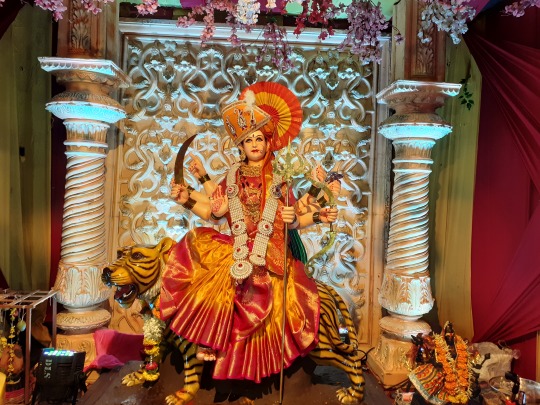
Durga - Sits upon a tiger during Navaratri
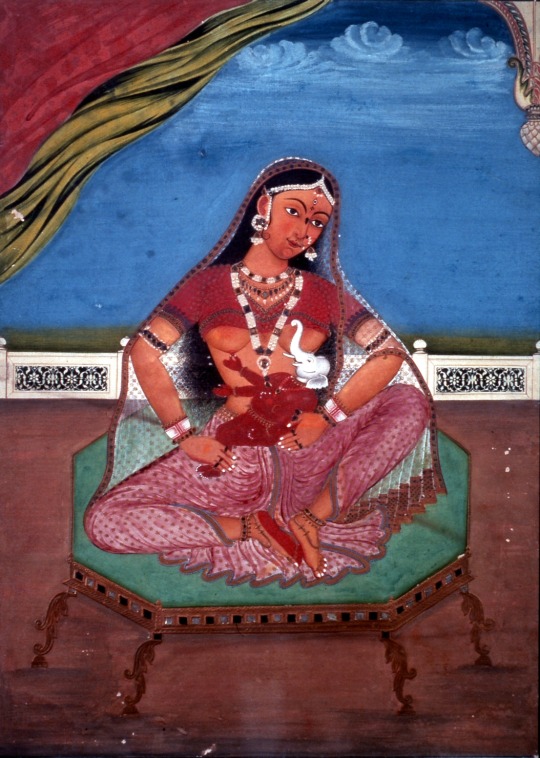
Parvati - She is kind and tender and represents motherhood

Kali - Goddess of Time, Change, Creation, Power, Destruction and Death
Many Hindus worship Shakti as the divine mother who calls for absolute surrender. Yogis regard Shakti as the power, lying dormant within the body as a coiled serpent (kundalini), that must be aroused and realized to reach spiritual liberation. Shaktism is an essential part of Hindu Tantra, a system of practices involving the worship of the goddess and designed to empower and release both mind and body.
In popular worship, the goddess Shakti is known by many names; Hindus regard all female deities as her different manifestations and may refer to her simply as Devi (Goddess).

Relief statues of Vaishnavi, Varahi, Indrani and Chamunda

Ammavaru - according to Hindu belief, she is an ancient goddess who laid the egg that hatched Brahma, Shiva and Vishnu. "Amma" means mother. She is thought to have existed before the beginning of time.
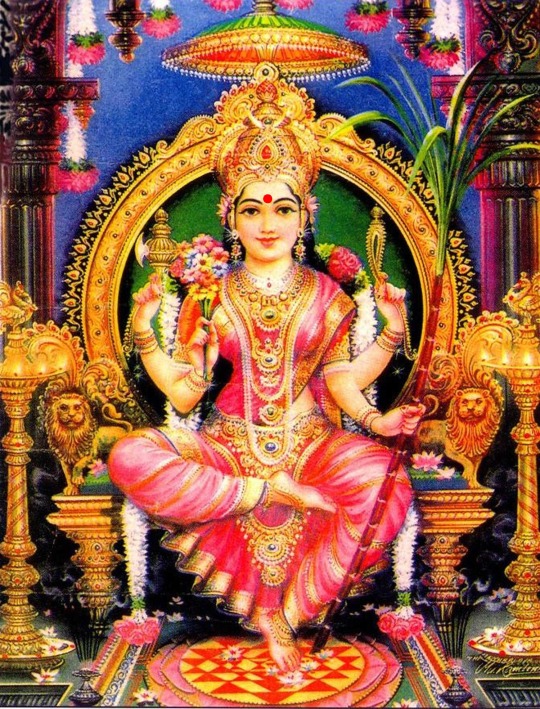
As Tripura Sundari, she is the complete supreme form. Here, she's enthroned with her left foot upon the Sri Chakra, holding her traditional symbols, the sugarcane bow, flower arrows, noose and goad.
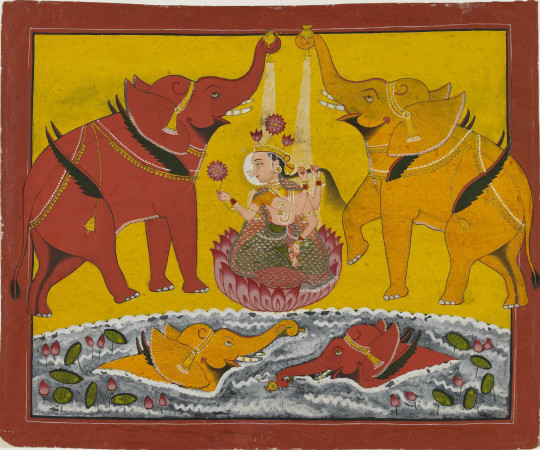
The goddess of prosperity, Lakshmi
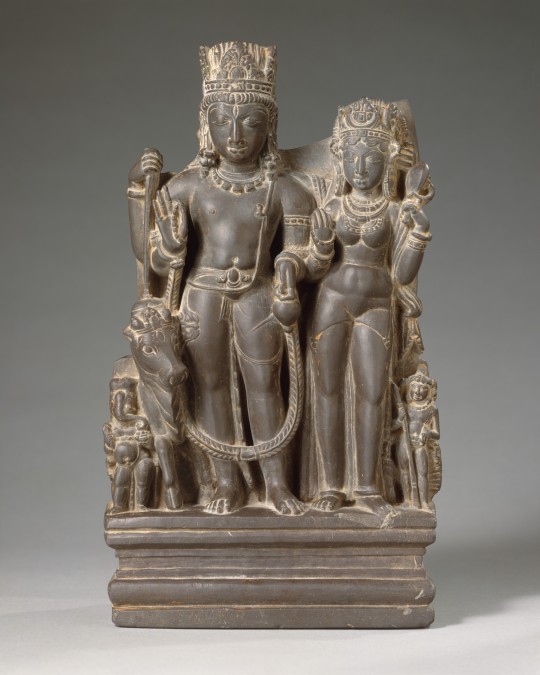
Shiva and Parvati with their Sons Karttikeya and Ganesha and the Calf Bull
The Mahavidya
The Mahavidya are a group of ten Hindu Tantric goddesses. The 10 Mahavidyas are: Kali, Tara, Tripura Sundari, Bhuvaneshvari, Bhairavi , Chhinnamasta, Dhumavati, Bagalamukhi, Matangi and Kamala. Nevertheless, the formation of this group encompass divergent and varied religious traditions that include yogini worship, Saivism, Vaishnavism, and Vajrayana Buddhism.
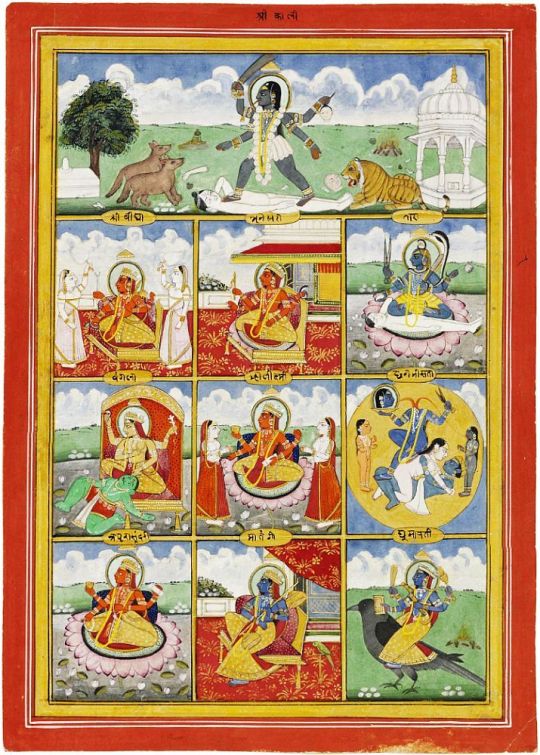
The ten mahavidyas, Rajasthan. Top: Kali. Second row (l->r): Bhairavi, Bhuvaneshvari, Tara. Third row (l->r): Bagalamukhi, Kamala, Chhinnamasta. Last row (l->r):Tripura Sundari, Matangi, Dhumavati
#shaktism#hinduism#ammavaru#durga#mahavidya#bagalamukhi#kamala#sundari#sundarihana#matangi#chhinnamasta#kali#bhairavi#vaishnavi#varahi#Indrani#chamunda#energy#power#eternal goddess#maha devi shakti#goddess
83 notes
·
View notes
Text
The Mahavidya (Sanskrit: महाविद्या, IAST: Mahāvidyā, lit. Great Wisdoms) are a group of ten Hindu[1] Tantric goddesses.[2] The 10 Mahavidyas are usually named in the following sequence: Kali, Tara, Tripura Sundari, Bhuvaneshvari, Bhairavi , Chhinnamasta, Dhumavati, Bagalamukhi, Matangi and Kamala.[3] Nevertheless, the formation of this group encompass divergent and varied religious traditions that include yogini worship, Saivism, Vaishnavism, and Vajrayana Buddhism.[4]
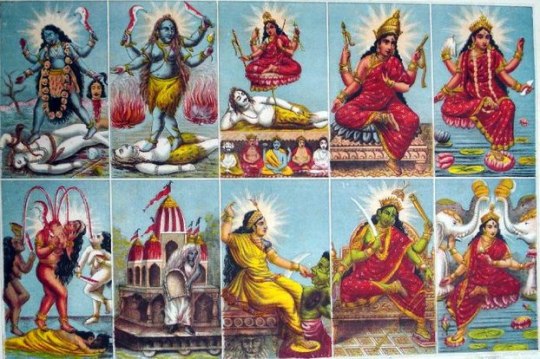
Shaktas believe, "the one Truth is sensed in ten different facets; the Divine Mother is adored and approached as ten cosmic personalities," the Dasa-Mahavidya ("ten-Mahavidyas").[6] As per another school of thought in Shaktism Mahavidyas are considered to be form of Mahakali. The Mahavidyas are considered Tantric in nature, and are usually identified as:[7
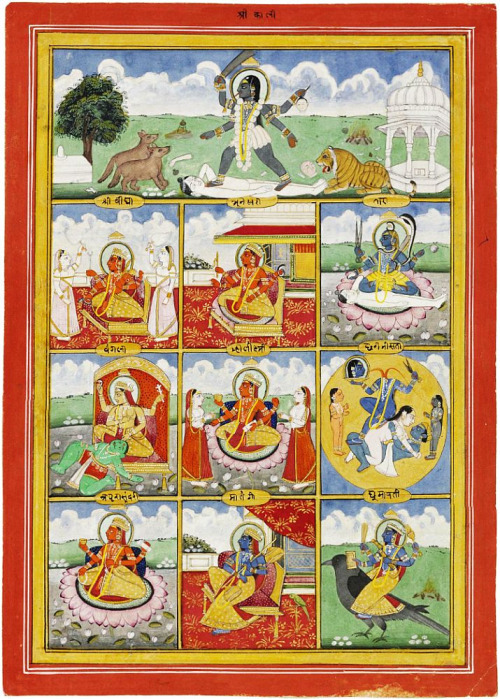
1. Kali: The goddess who is the ultimate form of Brahman, and the devourer of time (Supreme Deity of Kalikula systems). Mahakali is of a pitch black complexion, darker than the dark of the dead of the night. She has three eyes, representing the past, present and future. She has shining white, fang-like teeth, a gaping mouth, and her red, bloody tongue hanging from there. She has unbound, disheveled hairs. She wears tiger skins as her garments, a garland of skulls and a garland of rosy red flowers around her neck, and on her belt, she was adorned with skeletal bones, skeletal hands as well as severed arms and hands as her ornamentation. She has four hands, two of them had the trident called the trishula and the sword and two others carried a demon head and a bowl collecting the blood dripping from a demon head.
2. Tara: The goddess who acts as a guide and a protector, and she who offers the ultimate knowledge that grants salvation. She is the goddess of all sources of energy. The energy of the sun is believed to originate from her. She manifested as the mother of Shiva after the incident of Samudra Manthana to heal him as her child. Tara is of a light blue complexion. She has disheveled hair, wearing a crown decorated with the digit of the half-moon. She has three eyes, a snake coiled comfortably around her throat, wearing the skins of tigers, and a garland of skulls. She is also seen wearing a belt supporting her skirt made of tiger-skin. Her four hands carry a lotus, scimitar, demon head and scissors. Her left foot rests on the laying down Shiva.
3. Tripura Sundari (Shodashi, Lalita): The goddess who is "beauty of the three worlds" (Supreme Deity of Srikula systems); the "Tantric Parvati" or the "Moksha Mukta". She is the ruler of Manidvipa, the eternal supreme abode of the goddess. Shodashi is seen with a molten gold complexion, three placid eyes, a calm mien, wearing red and pink vestments, adorned with ornaments on her divine limbs and four hands, each holding a goad, lotus, a bow, and arrow. She is seated on a throne.
4. Bhuvaneshvari: The goddess as the world mother, or whose body comprises all the fourteen lokas of the cosmos. Bhuvaneshvari is of a fair, golden complexion, with three content eyes as well as a calm mien. She wears red and yellow garments, decorated with ornaments on her limbs and has four hands. Two of her four hands hold a goad and noose while her other two hands are open. She is seated on a divine, celestial throne.
5. Bhairavi: The fierce goddess. The female version of Bhairava. Bhairavi is of a fiery, volcanic red complexion, with three furious eyes, and disheveled hair. Her hair is matted, tied up in a bun, decorated by a crescent moon as well as adorning two horns, one sticking out from each side. She has two protruding tusks from the ends of her bloody mouth. She wears red and blue garments and is adorned with a garland of skulls around her neck. She also wears a belt decorated with severed hands and bones attached to it. She is also decked with snakes and serpents too as her ornamentation – rarely is she seen wearing any jewelry on her limbs. Of her four hands, two are open and two hold a rosary and book.
6. Chhinnamasta: The self-decapitated goddess. She chopped her own head off in order to satisfy Jaya and Vijaya (metaphors of rajas and tamas - part of the trigunas). Chinnamasta has a red complexion, embodied with a frightful appearance. She has disheveled hair. She has four hands, two of which hold a sword and another hand holding her own severed head; three blazing eyes with a frightful mien, wearing a crown. Two of her other hands hold a lasso and drinking bowl. She is a partially clothed lady, adorned with ornaments on her limbs and wearing a garland of skulls on her body. She is mounted upon the back of a copulating couple.
7. Dhumavati: The widow goddess. Dhumavati is of a smoky dark brown complexion, her skin is wrinkled, her mouth is dry, some of her teeth have fallen out, her long disheveled hair is gray, her eyes are seen as bloodshot and she has a frightening mien, which is seen as a combined source of anger, misery, fear, exhaustion, restlessness, constant hunger and thirst. She wears white clothes, donned in the attire of a widow. She is sitting in a horseless chariot as her vehicle of transportation and on top of the chariot, there is an emblem of a crow as well as a banner. She has two trembling hands, her one hand bestows boons and/or knowledge and the other holds a winnowing basket.
8. Bagalamukhi: The goddess who paralyzes enemies. Bagalamukhi has a molten gold complexion with three bright eyes, lush black hair and a benign mien. She is seen wearing yellow garments and apparel. She is decked with yellow ornaments on her limbs. Her two hands hold a mace or club and holds demon Madanasura by the tongue to keep him at bay. She is shown seated on either a throne or on the back of a crane.
9. Matangi: The Prime Minister of Lalita (in Srikula systems), sometimes called the "Tantric Saraswati". Matangi is depicted as emerald green in complexion, with lush, disheveled black hair, three placid eyes and a calm look on her face. She is seen wearing red garments and apparel, bedecked with various ornaments all over her delicate limbs. She is seated on a royal throne and she has four hands, three of which hold a sword or scimitar, a skull and a veena (a musical instrument). Her one hand bestows boons to her devotees.
10. Kamalatmika (Kamala): The lotus goddess; sometimes called the "Tantric Lakshmi". Kamala is of a molten gold complexion with lush black hair, three bright, placid eyes, and a benevolent expression. She is seen wearing red and pink garments and apparel and bedecked with various ornaments and lotuses all over her limbs. She is seated on a fully bloomed lotus, while with her four hands, two hold lotuses while two grant her devotees' wishes and assures protection from fear.
All these Mahavidyas reside in Manidvipa.
The Mahabhagavata Purana and Brihaddharma Purana however, list Shodashi (Sodasi) as Tripura Sundari, which is simply another name for the same goddess.[9] The Guhyati guyha-tantra associates the Mahavidyas with the Dashavatara, the ten avatars of Vishnu, and states that the Mahavidyas are the source from which the avatars of Vishnu arise.

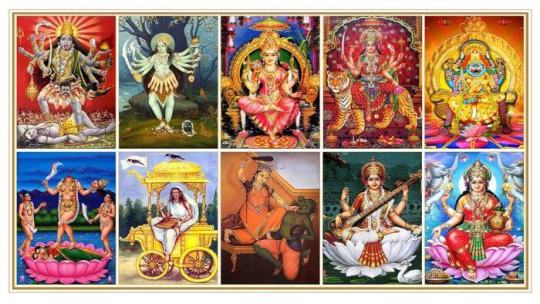

#desi aesthetic#desi tag#desiblr#desi#desi dark academia#desi culture#desi academia#desi stuff#hindu mythology#south asian aesthetic#south asian dark academia#aloukik 2023
36 notes
·
View notes
Text

THE TEMPLE OF "HARIHARA" AND THE ONLY SHIVA TEMPLE WHERE TULSI OFFERED IN THE LINGAM IN ODISHA
LINGARAJA TEMPLE
BHUBANESHWAR, ODISHA
Bhubaneswar is called the Ekamra Kshetra as the deity of Lingaraja was originally under a mango tree (Ekamra) as noted in Ekamra Purana, a 13th-century Sanskrit treatise. The temple is active in worship practises, unlike most other temples in Bhubaneswar. The temple has images of Vishnu, possibly because of the rising prominence of Jagannath sect emanating from the Ganga rulers who built the Jagannath Temple in Puri in the 12th century. The central deity of the temple, Lingaraja, is worshipped as Shiva.Lingaraja, literally means the king of Lingam, the iconic form of Shiva. Shiva was originally worshipped as Krutivasa and later as Harihara and is commonly referred to as Tribhuvaneshwara (also called Bhubaneswar), the master of three worlds, namely, heaven, earth, and neitherworld. His consort is called Bhuvaneshvari or Gopaluni.
Lingaraja temple is maintained by the Temple Trust Board and the Archaeological Survey of India (ASI).
Shivaratri is the major festival celebrating in the temple.
The image of Lingaraja is abluted with water (called mahasnana) several times a day and decorated with flowers, sandal paste and cloth. Hemlock or hemlock flowers which are generally offered in other Shiva temples is not allowed in the Lingaraja temple. Bilva leaves (Aegle marmelos) and tulasi (Ocimum sanctum) are used in daily worship. Offerings of cooked rice, curries and sweets are displayed in the bhogamandapa (hall of offering) and the divinity is invoked to accept them amidst scores of chanting of Sanskrit texts. Coconut, ripe plantains and kora-khai are generally offered to Lingaraja by the pilgrims. Bhang beverage is offered to Lingaraja by some devotees especially on the day of Pana Sankranti (Odia new year).
12 notes
·
View notes
Text
Die Mahavidyas (von Sanskrit महाविद्या Mahāvidyā = „große Verkörperung“ oder „großes Wissen“) sind eine Gruppe von zehn tantrischen Göttinnen, von denen die meisten in zornvollen und schrecklichen Formen erscheinen: Kali, Tara, Chinnamasta, Bhuvaneshvari, Bagala, Dhumavati, Kamala, Mitangi, Sodashi (auch Sundari) und Bhairavi oder Tripura Bhairavi.

In diesen Mythen spielen die Mahavidyas die Rolle, zu zeigen, dass das Weibliche selbst stärker ist als Shiva und die anderen männlichen Götter, und es liegt nahe anzunehmem, dass die Shaktas die Überlegenheit der Mahadevi zeigen wollten.
1 note
·
View note
Text
Sri Bhuvaneswari Stotram Text Sanskrit English
Bhuvaneswari is one of the fundamental forms of Sakthi. She embodies the essential concept of Sri Vidya Upasna in Its Transcendental and Temporal Aspects. The Bija mantra of Sri Bhuvaneswari is from Panchadasi.
Bhuvaneswari is one of the fundamental forms of Sakthi. She embodies the essential concept of Sri Vidya Upasna in Its Transcendental and Temporal Aspects. The Bija mantra of Sri Bhuvaneswari is from Panchadasi.
The word Bhuvaneshvari is a compound of the words Bhuvana Iśwari, meaning “Goddess of the world” or “Queen of the universe”, where the worlds are the tri-bhuvana or three regions of bhūḥ…

View On WordPress
#Bhuvaneswari#Bhuvaneswari stotra#Devi Bhuvaneswari#Devi Upasna#Panchadasi Sri Lalita Sahasranama#Sakthi Upasna#Sri Vidya Upasna
0 notes
Photo
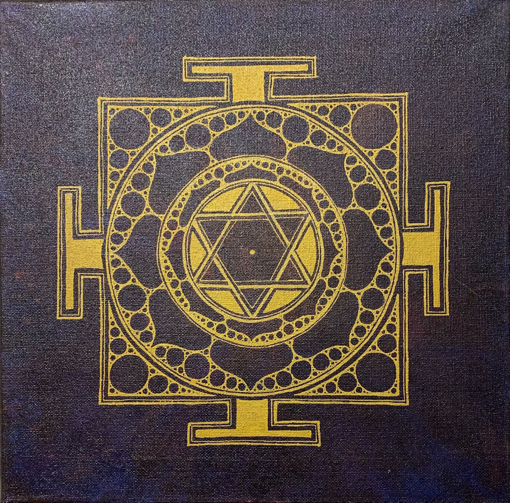
Aishwayra Chandrasekar writes that her piece, Goddess of the Universe, “was inspired by the Bhuvaneshvari Yantra, a Tantric geometric design that represents the infiniteness of the cosmos through the divine feminine.”
On display in the Asian Arts Gallery through December 17, 2022. Asian Arts Gallery, Center for the Arts, Towson University.
Gallery Hours: 11 a.m. - 4 p.m. Monday through Saturday.
INFO: bit.ly/aacc-events
0 notes
Text
Who is Goddess Bhuvaneshvari?

Goddess Bhuvaneshvari is a Hindu Goddess and is the fourth amongst the ten Maahaavidya Goddesses in Shaktism and one of the highest aspects of Maahaadevi. She is identified as Aadi Paaraashakti in the Devi Bhagavatam. The word ‘’Bhuvaneśwari’’ is a compound of the words Bhuvana Ishwari, meaning "Goddess of the world" or "Queen of the universe", where the worlds are the tri-bhuvana or three regions of bhu (Earth), bhuva (atmosphere) and sva (Heavens). Her complexion is red. She has three eyes, four arms, braided hair and is clad in red ornaments. She wears a garland of lotuses and her body is anointed with red sandalwood paste. She helds a goad and a noose with her left hands, while her right hands displays Abhaya and Varada Mudraas. She is decked with ornaments and wears a crown with a digit of crescent moon as crest jewel. She is seated on the left lap of God Bhuvaneshwara. All the Lokas (Worlds) are formed from Goddess Bhuvaneshwari. Lord Brahma, Lord Maheshwara and Lord Vishnu witnessed many worlds within Goddess Bhuvaneshwari's toe nail. She is the source of the creation of the world. Goddess Bhuvaneshwari is believed as the supreme goddess who creates everything and destroys the evils of the world according to Devi Bhagavatam. One who worships Goddess Bhuvaneshwari is blessed with power, strength, wisdom, and wealth. Devi Bhuvaneshwari is also known with other names such as Kali, Chandika, Parvati, Durga, and many more.
Before anything existed, it was the sun that appeared in the heavens. The rishis begged to create more worlds and offered soma to Lord Surya, master of the sky. Lord Surya was pleased and through the power of Supreme Energy, he created the three worlds. Having created the worlds, the goddess appeared in the form of Bhuvaneshwari. Then she ruled and protected the three worlds. The word Bhuvaneshwari is a Sanskrit word composed up of two terms: Bhuvana and Ishwari. She is the creator of Prakriti or Nature. She commands the whole universe and controls the influence of turning the situation as per her desire. She is considered to be the Goddess of Love as the Iccha Shakti. She creates the power of love, space, gives freedom, as unattached love has no boundaries. Goddess Bhuvaneshwari is the goddess of infinite space. The Divine Mother Bhuvaneshwari creates the space so that all the things in the manifested world could come up eventually.
To know more, click here.
0 notes
Text
"Durga is a major deity in Hinduism. She is worshipped as a one of principal aspect of the supreme mother goddess Mahadevi and is one of the most popular and widely revered among Indian divinities. She is associated with protection, strength, motherhood, destruction and wars. According to Devi-Bhagavata Purana she is one of the five major forms of Goddess Bhuvaneshvari. Her legend centres around combating evils and demonic forces that threaten peace, prosperity, and Dharma the power of good over evil. Durga is believed to unleash her divine wrath against the wicked for the liberation of the oppressed, and entails destruction to empower creation. Historians of religion and art tend to trace the earliest depiction of Durga to the seals of Indus Valley Civilization. However, this claim lacks direct visual evidence from the site. There are several hints to her in the early Vedic texts and by the time of the epics, she emerges as an independent deity. Durga is seen as a motherly figure and often depicted as a beautiful woman, riding a lion or tiger, with many arms each carrying a weapon and often defeating demons. She is widely worshipped by the followers of the goddess centric sect, Shaktism, and has importance in other denominations like Shaivism and Vaishnavism. Under these traditions, Durga is associated and identified with other deities. There are many devotees of Goddess Durga who recite Saptashloki Durga Saptashati to seek her blessings."
#Durga#Durgā#Mahishasuramardini#Amba#Jagdamba#Jagat Janani#India#Hindu#deity#women#legendary#interesting ladies on wikipedia
0 notes
Photo

Bhuvanashvari Yantra, Rajasthan, 1901
Photographer: William Dalrymple (via Twitter: William Dalrymple @Dalrymplewill)
81 notes
·
View notes
Photo
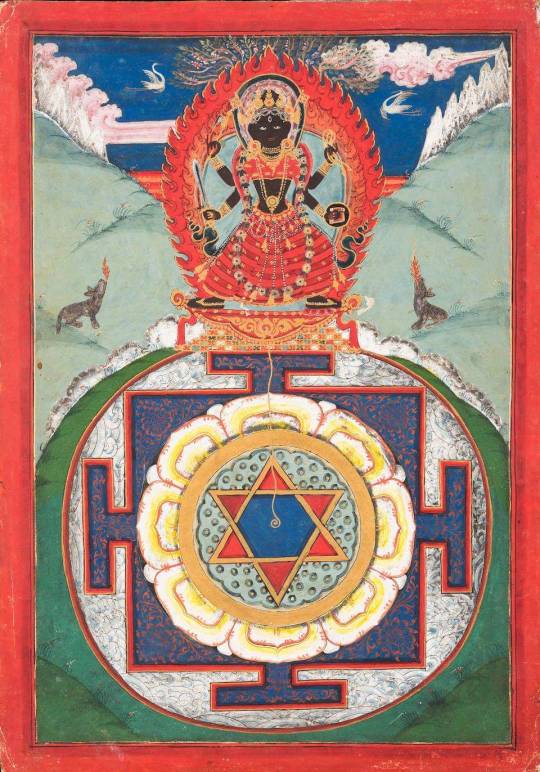
Bhuvaneshvari rising from a yantra , Nepal
96 notes
·
View notes
